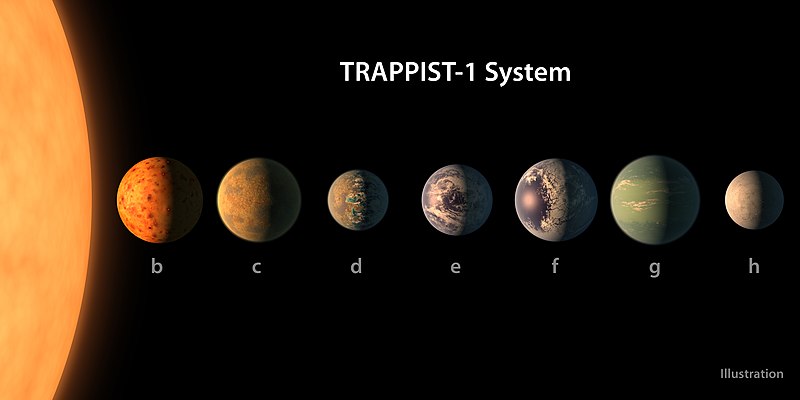Archivo:PIA21422 - TRAPPIST-1 Planet Lineup, Figure 1.jpg

Tamaño de esta previsualización: 800 × 400 píxeles. Otras resoluciones: 320 × 160 píxeles · 640 × 320 píxeles · 1024 × 512 píxeles · 1280 × 640 píxeles · 2560 × 1280 píxeles · 6000 × 3000 píxeles.
Ver la imagen en su resolución original (6000 × 3000 píxeles; tamaño de archivo: 2,63 MB; tipo MIME: image/jpeg)
Historial del archivo
Haz clic sobre una fecha y hora para ver el archivo tal como apareció en ese momento.
| Fecha y hora | Miniatura | Dimensiones | Usuario | Comentario | |
|---|---|---|---|---|---|
| actual | 18:39 22 feb 2017 |  | 6000 × 3000 (2,63 MB) | PhilipTerryGraham | User created page with UploadWizard |
Usos del archivo
Las siguientes páginas usan este archivo:
Uso global del archivo
Las wikis siguientes utilizan este archivo:
- Uso en af.wikipedia.org
- Uso en ar.wikipedia.org
- Uso en bn.wikipedia.org
- Uso en ca.wikipedia.org
- Uso en el.wikipedia.org
- Uso en en.wikipedia.org
- Uso en et.wikipedia.org
- Uso en fi.wikipedia.org
- Uso en fi.wikibooks.org
- Uso en glk.wikipedia.org
- Uso en id.wikipedia.org
- Uso en ja.wikipedia.org
- Uso en ku.wikipedia.org
- Uso en lt.wikipedia.org
- Uso en ms.wikipedia.org
- Uso en my.wikipedia.org
- Uso en nl.wikipedia.org
- Uso en pnb.wikipedia.org
- Uso en pt.wikipedia.org
- Uso en ro.wikipedia.org
- Uso en tl.wikipedia.org
- Uso en tr.wikipedia.org
- Uso en uk.wikipedia.org
- Uso en ur.wikipedia.org
- Uso en vi.wikipedia.org




